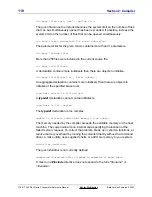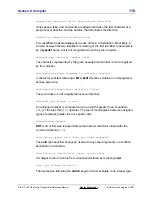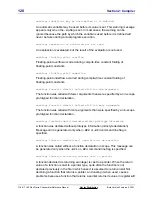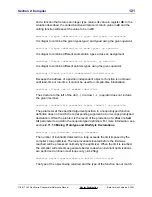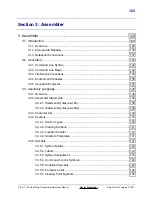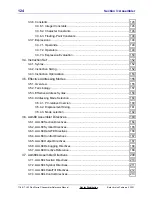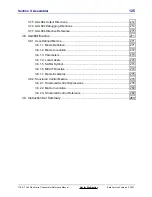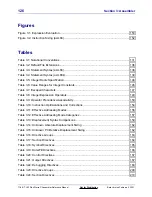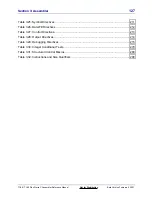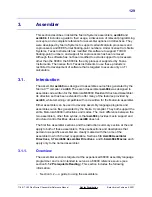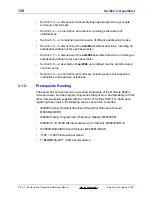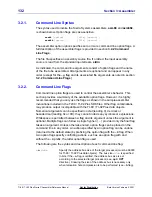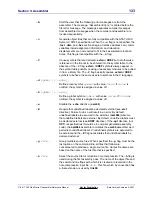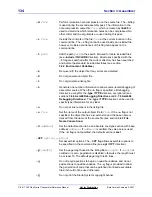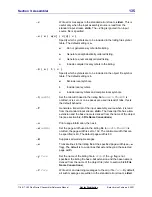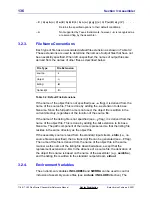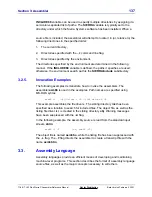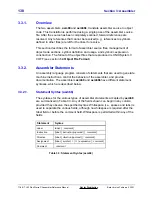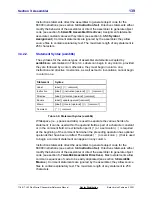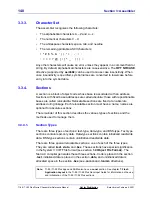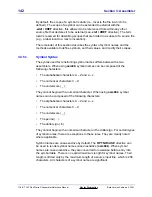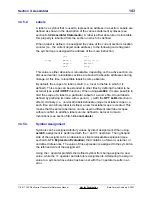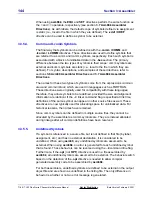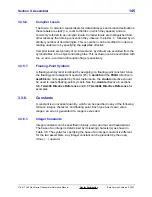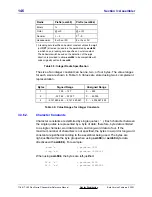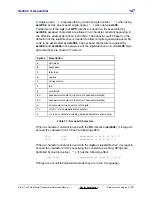
132
Section 3: Assembler
TI
-
89 / TI
-
92 Plus Sierra C Assembler Reference Manual
Not for Distribution
Beta Version February 2, 2001
3.2.1.
Command Line Syntax
The syntax used to invoke the Sierra Systems assemblers, asm68 and asm68k,
is shown below. Option flags are case-sensitive.
asm68 [
option] . . . [file] [option] . . .
asm68k [
option] . . . [file] [option] . . .
The assembler option
option specifies zero or more command line option flags. A
full description of the assembler flags is provided in section 3.2.2 Command
Line Flags.
The file
file specifies an assembly source file. If omitted, the input assembly
source is read from the standard input stream, stdin.
As indicated, the command line arguments consist of option flags and the name
of the file to be assembled. All arguments are optional and can appear in any
order (except for the
-g
flag and its associated file arguments as noted in section
3.2.2 Command Line Flags).
3.2.2.
Command Line Flags
Command line option flags are used to control the assembler’s behavior. This
section provides a summary of the available option flags. However, it is highly
recommended that you only use the flags as shown in the sample assembler
invocations included in the TI-89 / TI-92 Plus SDK files. Other flag combinations
may produce output incompatible with the TI-89 / TI-92 Plus data objects.
Numerical arguments can be specified in octal (leading 0), decimal, or
hexadecimal (leading 0x or 0X); they cannot include any symbols or expressions.
Whitespace is permitted between a flag and its argument unless the argument is
optional. Multiple flags can follow a single hyphen (
-
) provided only the final flag
takes an argument. Unless otherwise noted, option flags can be placed on the
command line in any order. An action specified by an option flag can be undone
(returned to the default state) by prefixing the option flag with the
-Z
flag. When
two option flags specify conflicting actions, such as an option flag with and
without the
-Z
prefix, the latter option flag is used.
The following are the syntax and description of each command line flag:
-a
size
Specify the address bus size of the target processor (must be 68000
for TI-89 / TI-92 Plus data objects). The bus size
size
is specified
in bits. If the
-a
flag is omitted, the address bus size is set
according to the selected target processor (see .opt / OPT
directive). Knowing the size of the address bus is necessary only
when relocation hole compression is to be performed (see
-h
flag).

